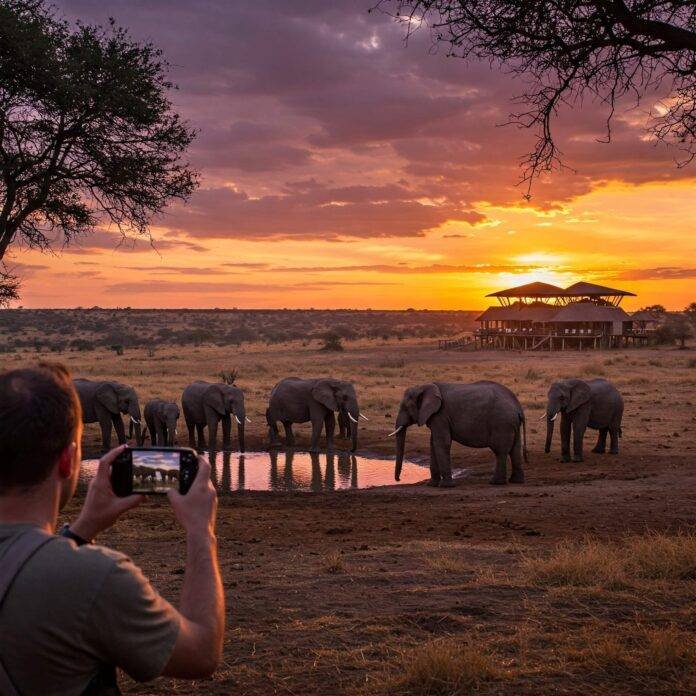Eco-friendly wildlife travel lets you explore nature’s wonders while protecting the planet. Whether you’re dreaming of spotting lions in Africa or swimming with dolphins in the Pacific, sustainable wildlife trips ensure your adventure supports conservation. This guide shares practical tips to plan a responsible, unforgettable journey.
Why Eco-Friendly Wildlife Travel Is Essential
Tourism can harm ecosystems if not managed responsibly. The World Wildlife Fund reports that over-tourism contributes to habitat destruction and pollution. Eco-friendly wildlife travels minimizes these impacts, preserving biodiversity and deepening your connection to nature.
Risks of Ignoring Sustainable Wildlife Travel
Unethical practices, like elephant rides in Thailand or careless diving in coral reefs, damage wildlife habitats. Choosing sustainable wildlife trips helps protect animals and their environments.

Step 1: Choose Operators for Eco-Friendly Wildlife Travel
Eco-friendly wildlife travels starts with selecting destinations and tour operators committed to conservation. Look for companies certified by the Global Sustainable Tourism Council. For example, Costa Rica’s ecolodges offer low-impact tours that prioritize wildlife protection.
Evaluating Responsible Wildlife Tourism Operators
- Do you follow ethical wildlife guidelines?
- Are your tours carbon-neutral?
- How do you support local conservation?
Top Destinations for Green Wildlife Adventures
- Galápagos Islands, Ecuador: Strict rules protect species like marine iguanas.
- Botswana, Africa: Eco-safaris focus on low-impact exploration.
- Borneo, Malaysia: Sanctuaries aid orangutan conservation.
Step 2: Reduce Impact with Eco-Friendly Wildlife Travel
Eco-friendly wildlife travels means minimizing your footprint. Simple choices, like using reusable water bottles or staying in green-certified hotels, make a big difference. Opt for accommodations with certifications like LEED or Green Globe.
Green Tips for Sustainable Wildlife Trips
- Pack light: Less luggage reduces travel emissions.
- Use public transport: Shared shuttles cut carbon output.
- Eat local: Plant-based, local meals support sustainable farming.

Step 3: Respect Wildlife in Eco-Friendly Travel
A key part of eco-friendly wildlife travels is respecting animals and their homes. Keep your distance, avoid feeding wildlife, and follow guidelines from the International Union for Conservation of Nature.
Guidelines for Responsible Wildlife Tourism
- Do: Use zoom lenses or binoculars for observation.
- Don’t: Touch or chase animals for photos.
- Do: Stay on marked trails to protect habitats.
- Don’t: Buy souvenirs from endangered species, like coral.
Example of Eco-Conscious Wildlife Trips
In Australia’s Great Barrier Reef, responsible snorkeling tours teach visitors to avoid touching corals, preserving this fragile ecosystem for future travelers.
Step 4: Support Conservation Through Eco-Friendly Wildlife Travels
Eco-friendly wildlife travels includes giving back to conservation. Many destinations offer ways to volunteer or donate. For example, Kenya’s David Sheldrick Wildlife Trust lets travelers sponsor orphaned elephants, supporting their care.
Ways to Boost Sustainable Wildlife Travel
- Donate to NGOs: Fund habitat restoration or anti-poaching.
- Join citizen science: Record wildlife data for research.
- Choose community tourism: Stay in locally owned lodges.

Final Thoughts on Eco-Friendly Wildlife Travel
Eco-friendly wildlife travel is about making mindful choices to protect nature. From picking sustainable operators to respecting wildlife, every step creates a positive impact. Plan your sustainable wildlife trip today and inspire others to explore responsibly!
Outbound Link: Ethical wildlife experiences: How to find responsibly-managed animal encounters – Wanderlust Magazine:





































